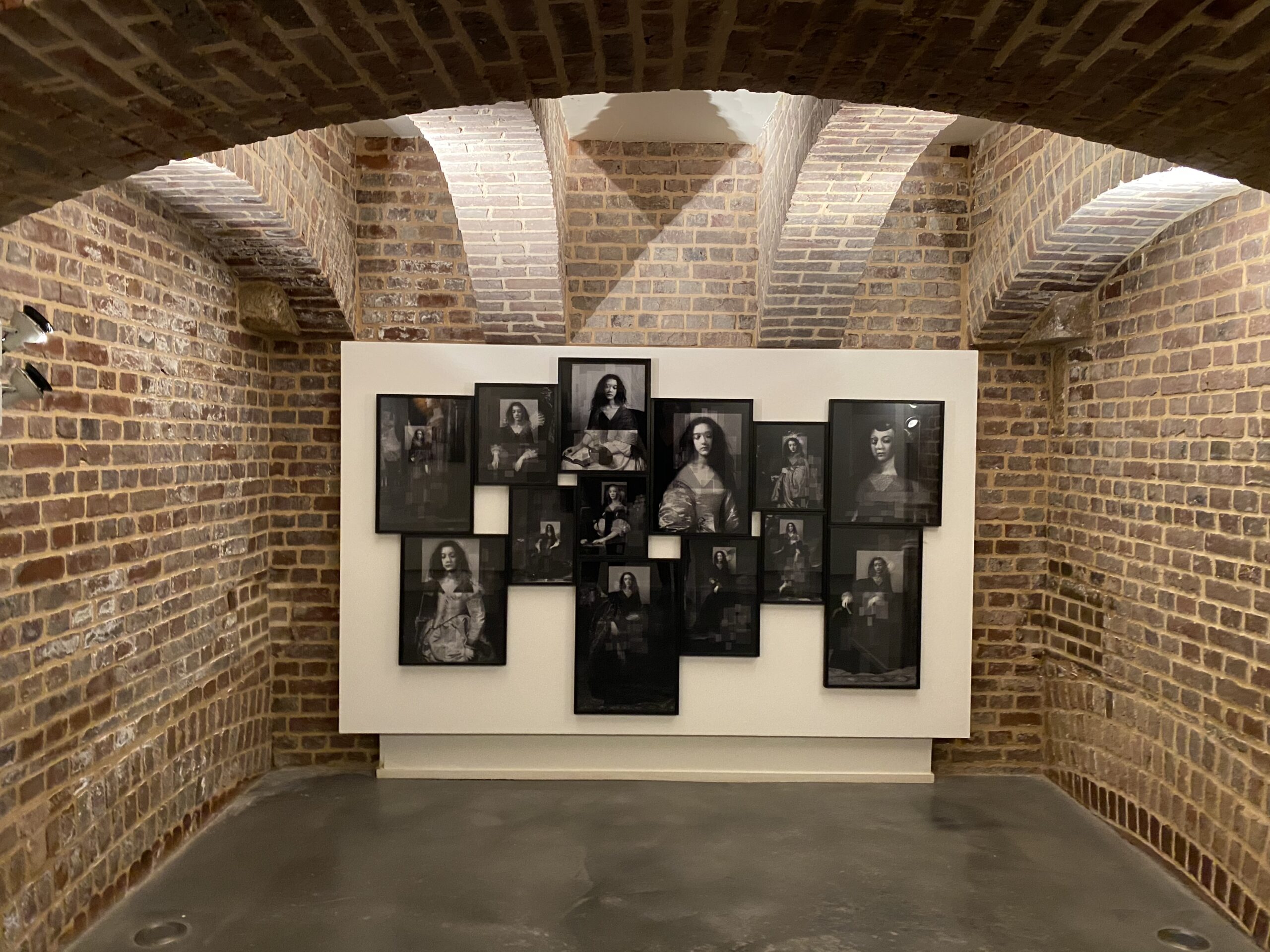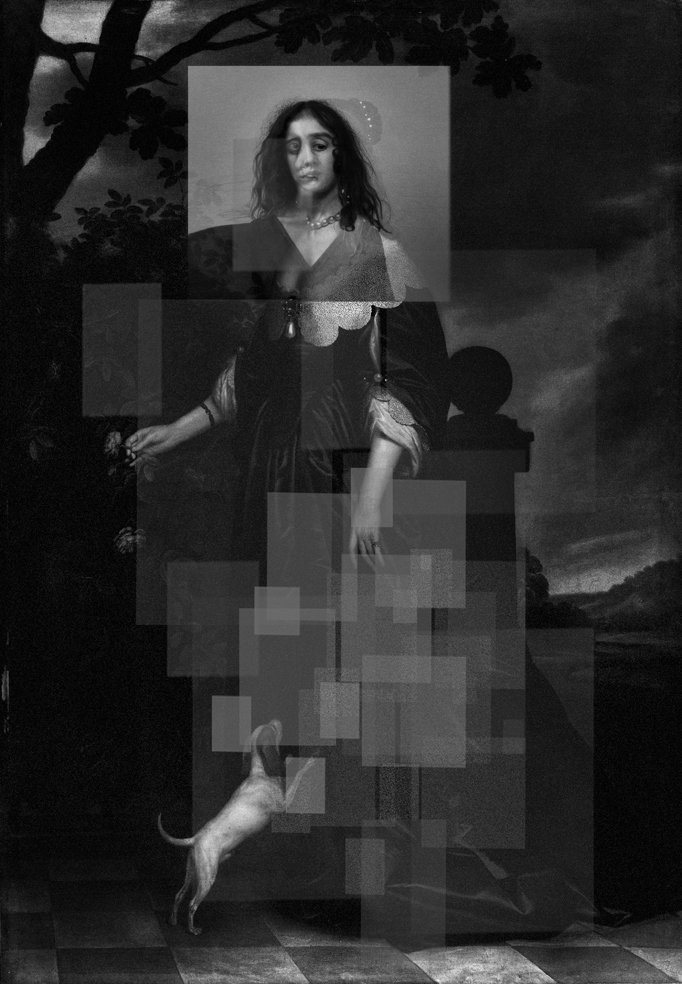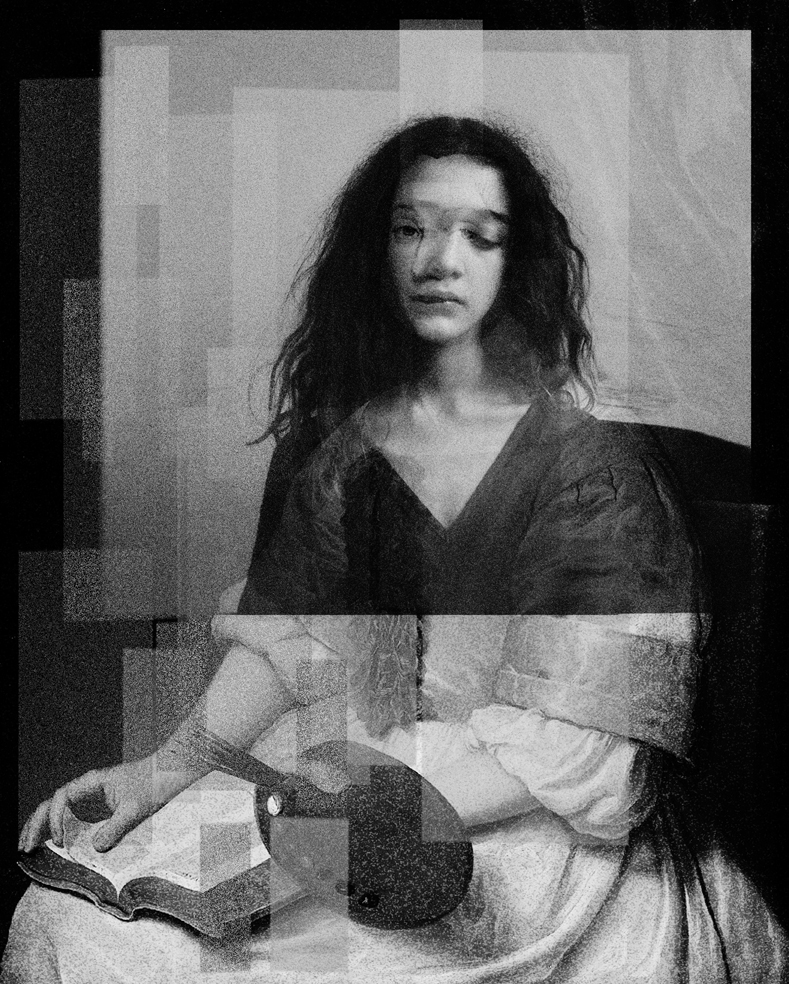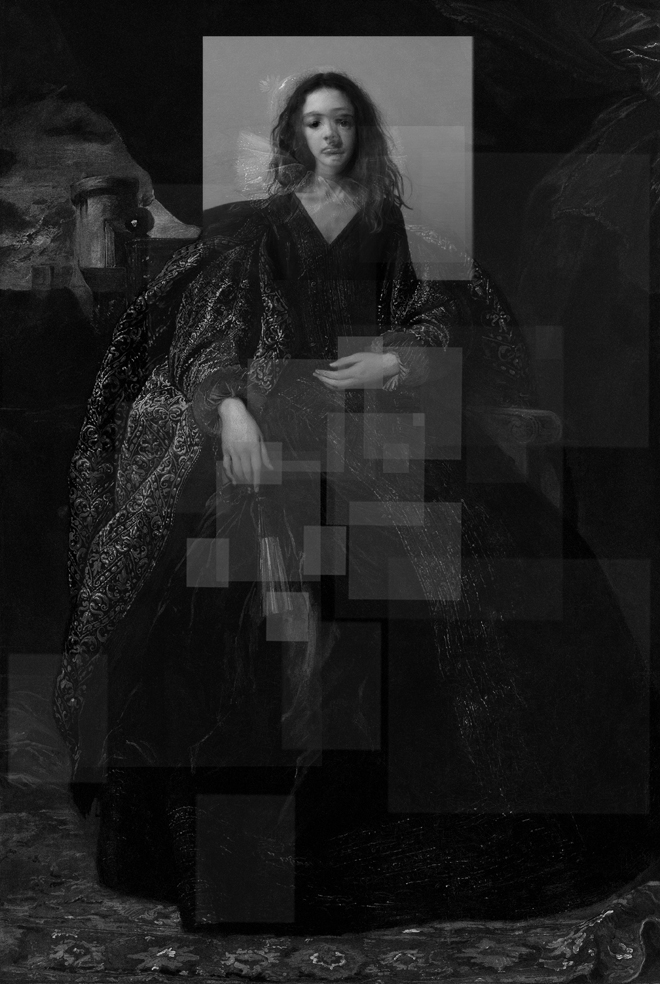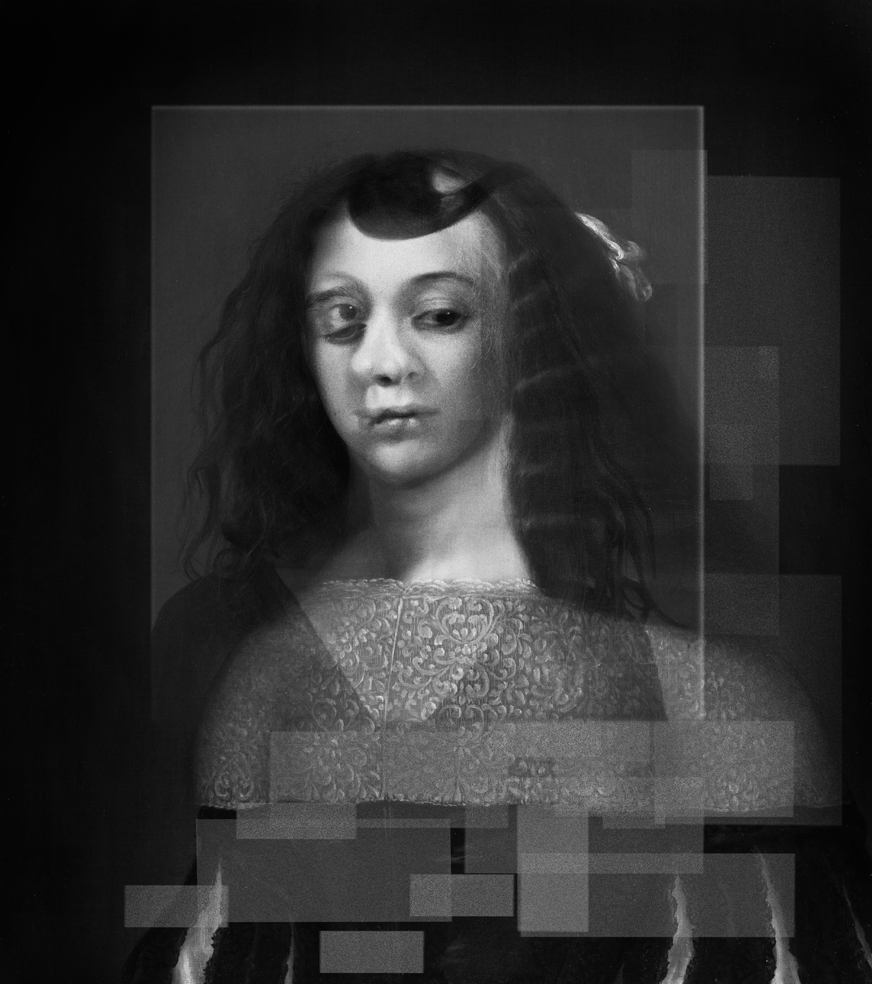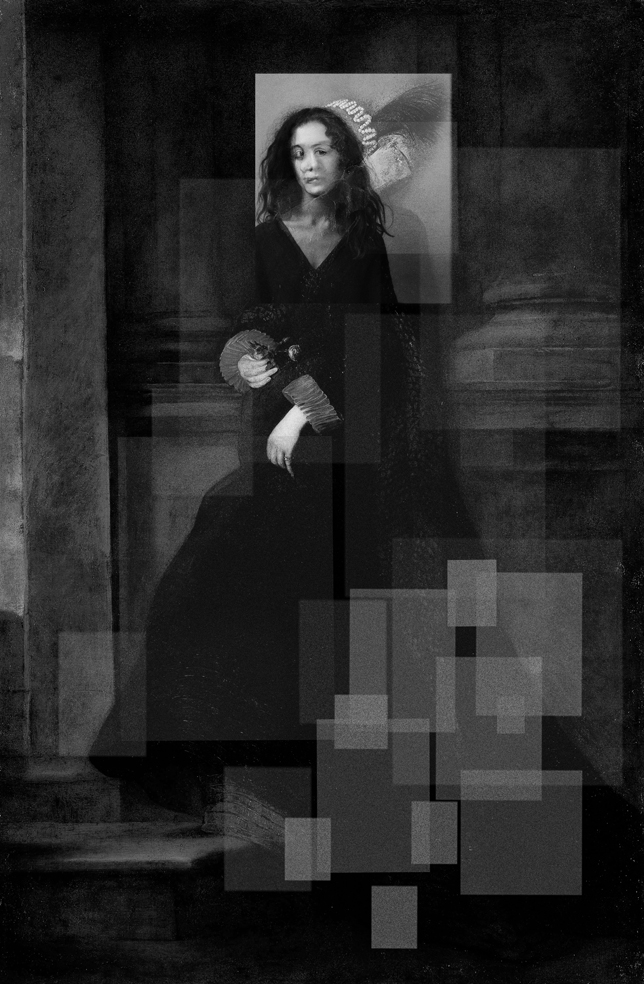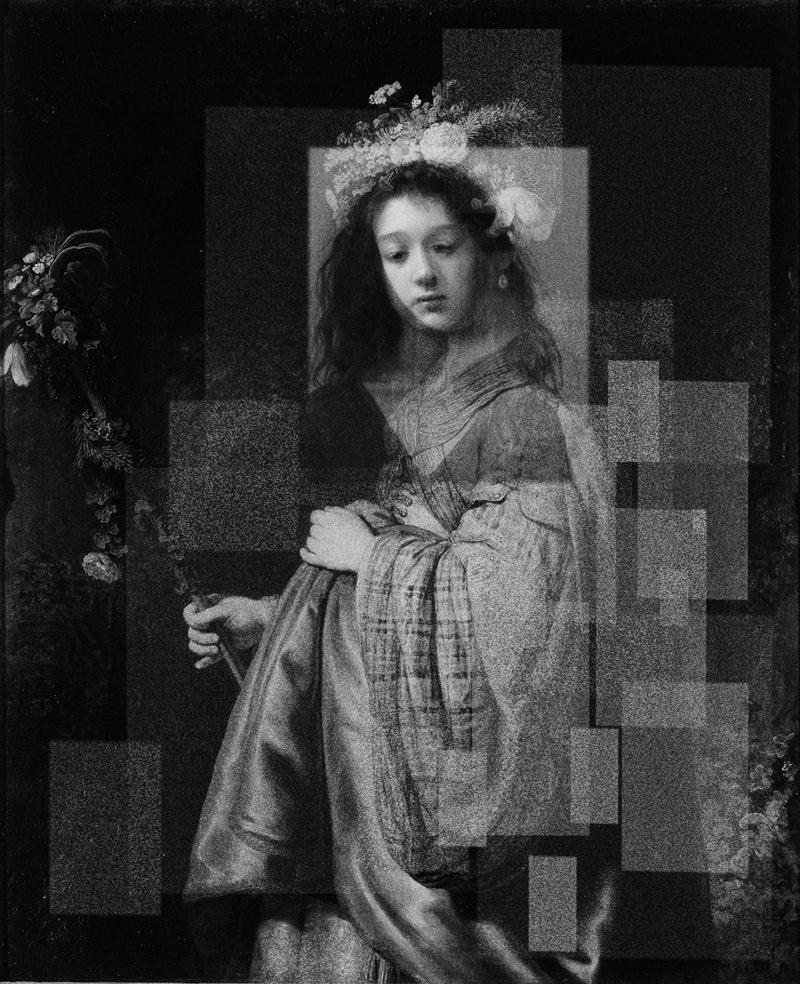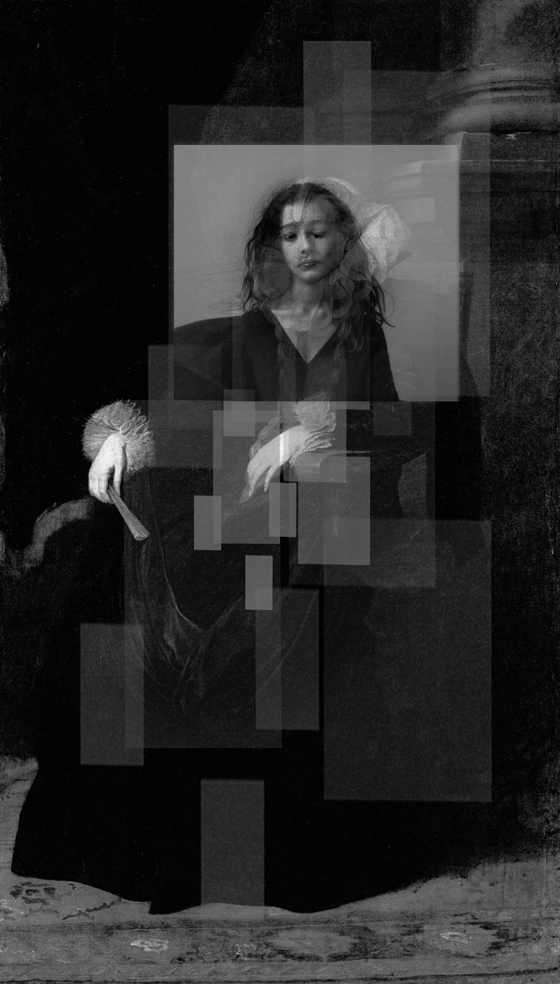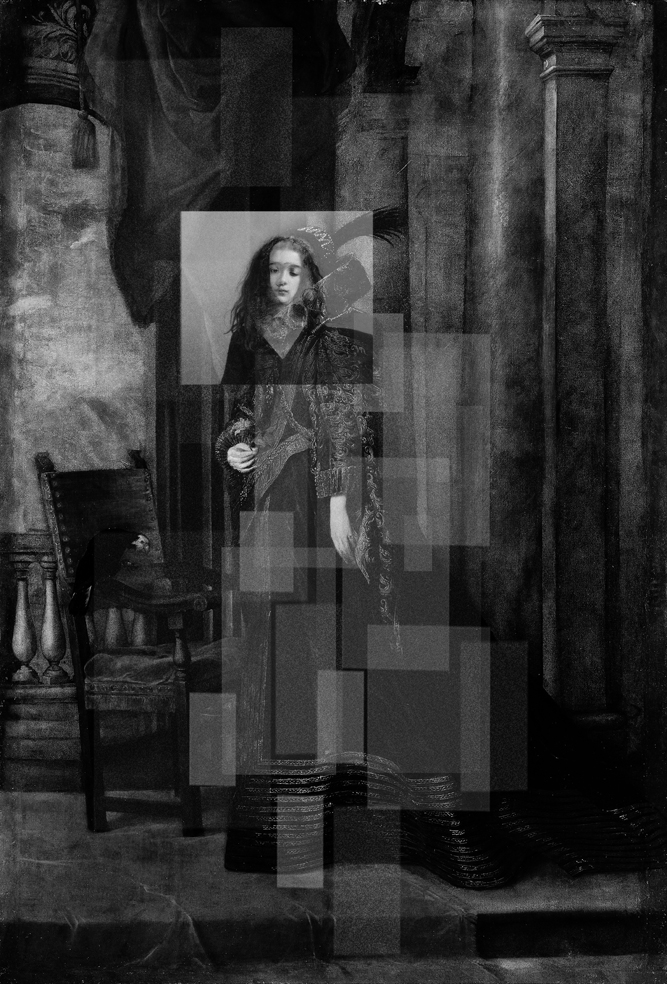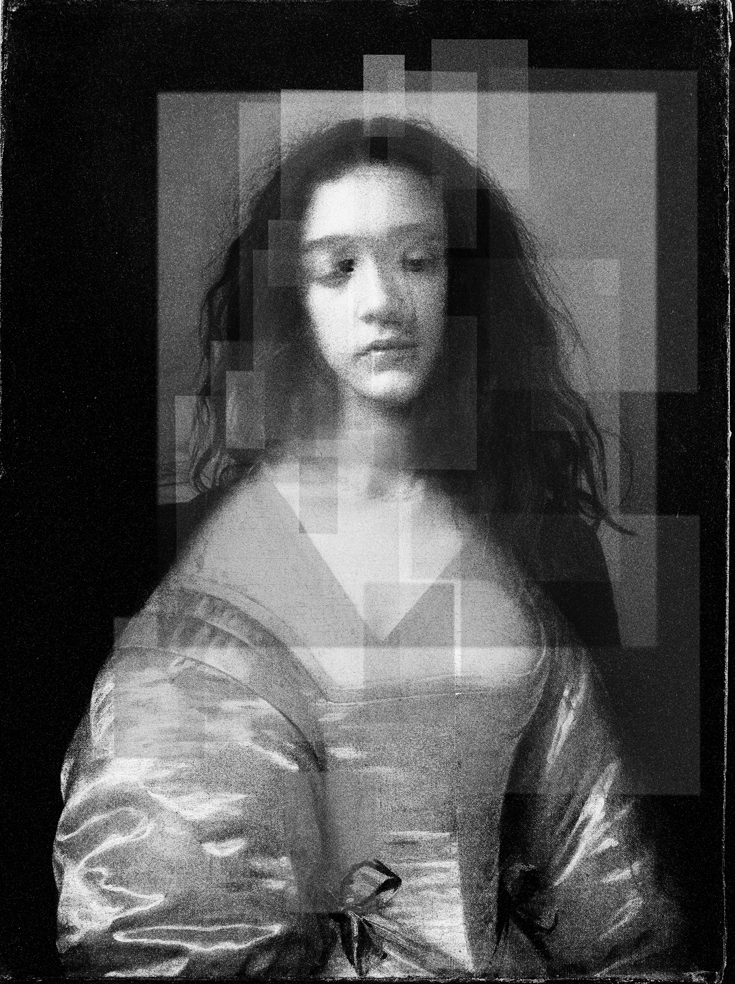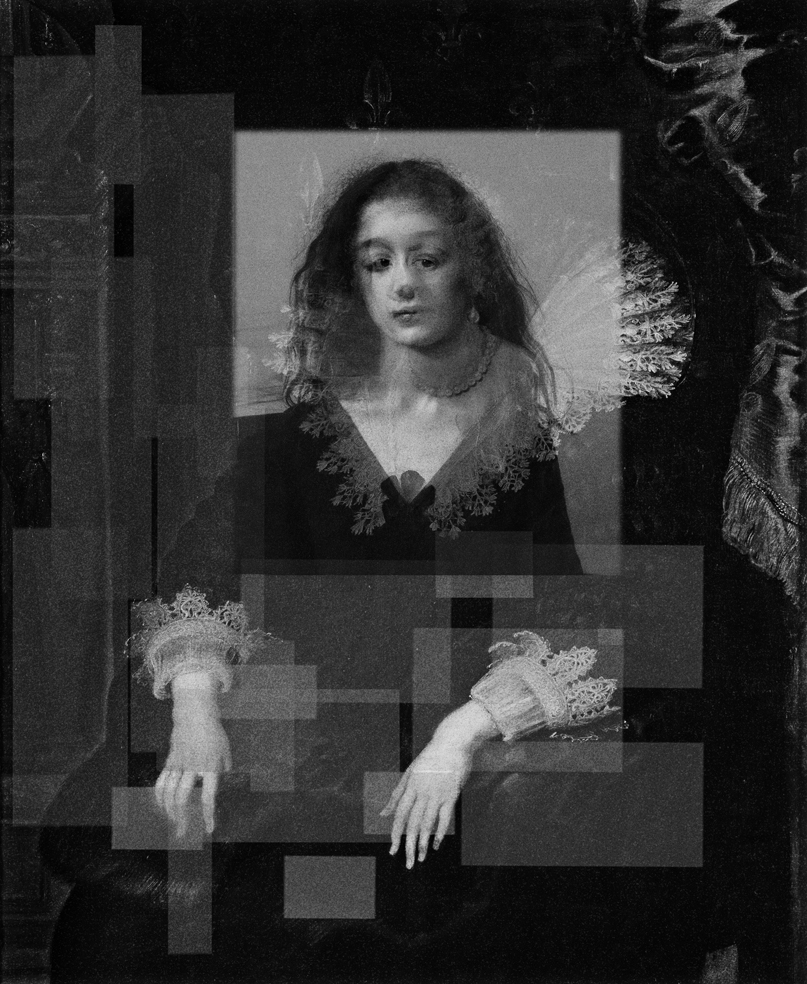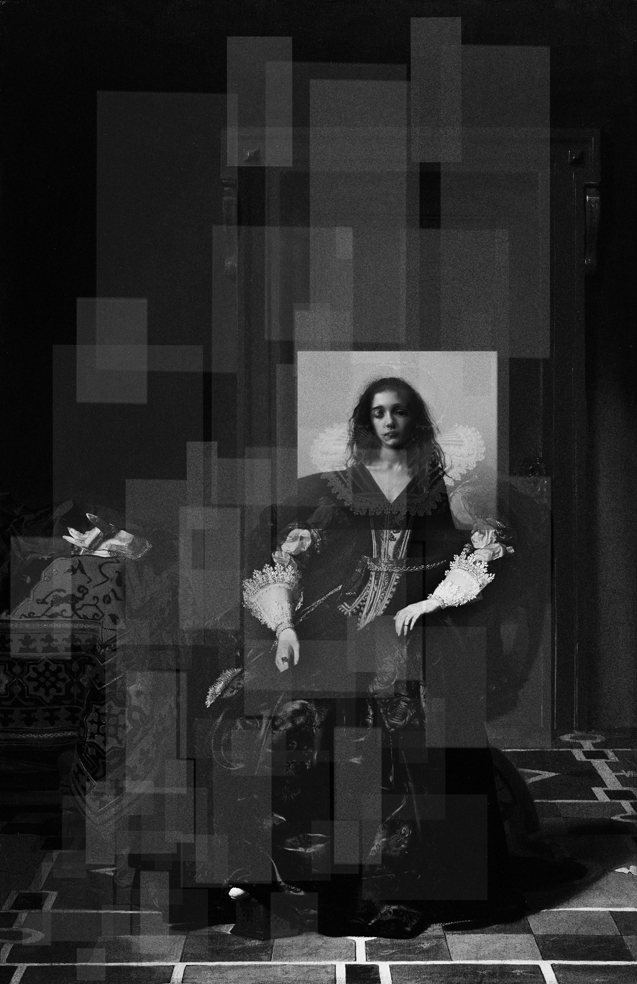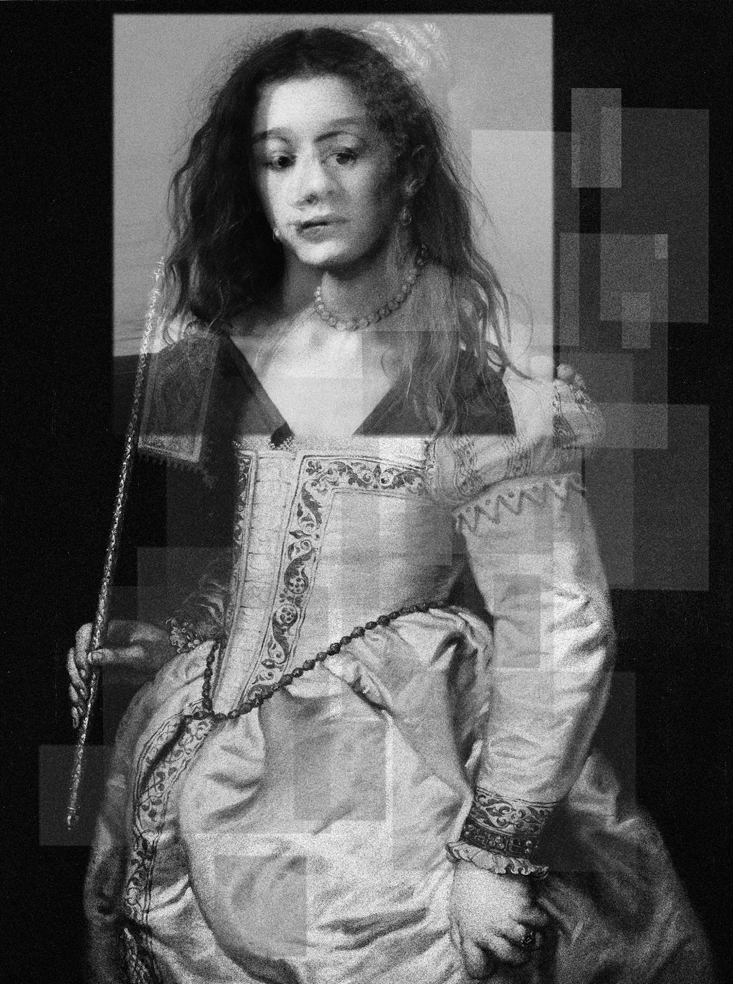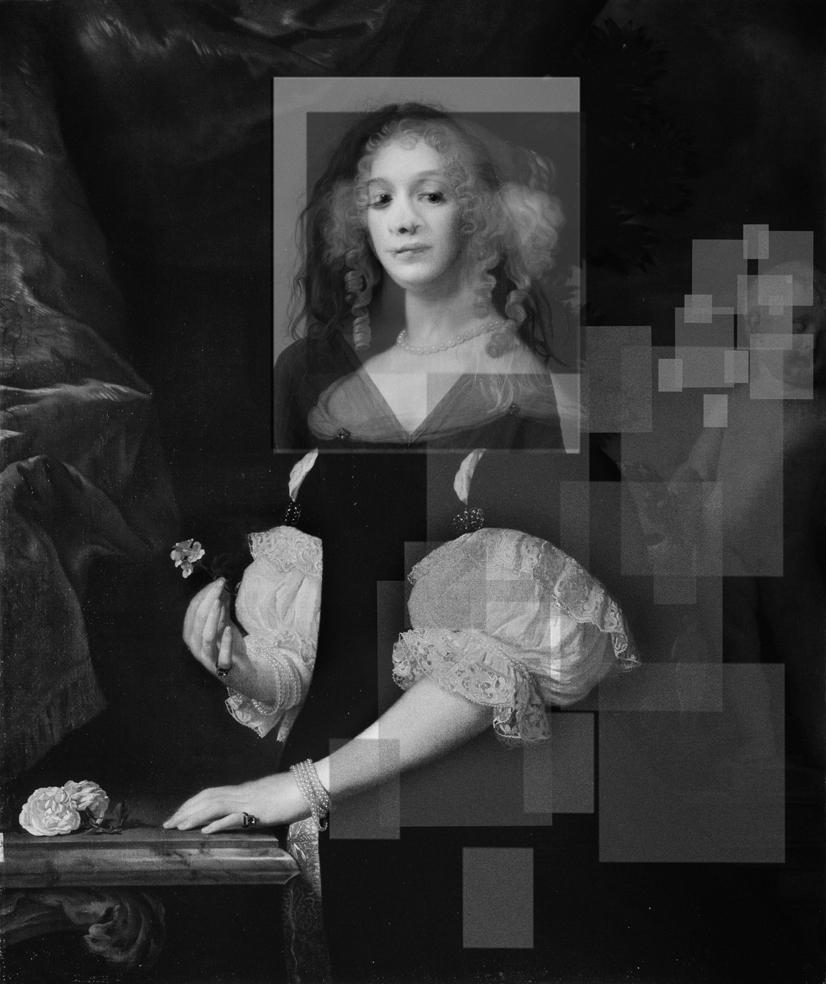2019 – LEITMOTIV
Leitmotiv : Polyptique Obsessionnel
Des peintures du Siècle d’Or Hollandais sont ici réinterprétées à l’aune de la philosophie prônée par le mouvement De Stijl : destruction du baroque et refus de l’esthétique.
Superposées aux tableaux d’origine, on note l’intrusion de formes géométriques appliquées en aplats, limitées à des rectangles et des carrés, caractéristique du mouvement.
Un seul et même portrait photographique vient hanter chaque tableau de manière récurrente, mais prend une allure différente en se fondant dans le tableau, produisant un kaléidoscope d’effets.
Le regard passe de l’idée du repentir à l’image subliminale, à la fragmentation, au cubisme, à la mise en abîme, entraînant le spectateur vers la perte de repères et la déstabilisation.
En référence à la réflectographie, technologie de l’imagerie d’investigation par fluorescence qui sonde l’âme des images en permettant de voir le dessin sous-jacent, et par conséquent analyse l’élaboration d’une oeuvre en donnant à voir ce qui se cache sous la surface du tableau, l’idée de superposition temporelle et stylistique rend ici visible le travail du temps dans l’histoire de l’art.
Leitmotif: Obsessional Polyptych
Dutch Golden Age paintings are reinterpreted here in light of the philosophy advocated by the De Stijl movement: destruction of the baroque and refusal of aesthetics.
Superimposed on the original paintings, note the addition of geometric shapes applied in flat tints, restricted to rectangles and squares, typical of the movement.
The same photographic portrait repeatedly haunts each painting but takes on a different look merging into the painting, creating a kaleidoscope of effects. Attention flits from the idea of repentance to subliminal image, fragmentation, cubism, mise en abyme, causing viewers to experience a loss of bearings and destabilisation.
In reference to reflectography, fluorescence investigative imaging technology that probes the soul of images by revealing the underlying artwork, and consequently analyses the development of a work of art by bringing out what is hiding beneath the surface of the painting, the concept of stylistic and temporal overlay exposes here the work of time in the history of art.

